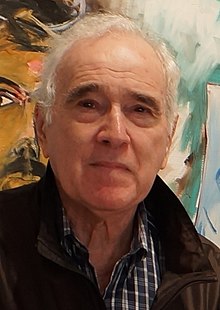
The avant-garde is a person or work that is experimental, radical, or unorthodox with respect to art, culture, or society. It is frequently characterized by aesthetic innovation and initial unacceptability.

Clement Greenberg, occasionally writing under the pseudonym K. Hardesh, was an American essayist known mainly as an art critic closely associated with American modern art of the mid-20th century and a formalist aesthetician. He is best remembered for his association with the art movement abstract expressionism and the painter Jackson Pollock.
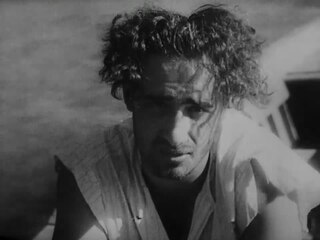
Experimental film or avant-garde cinema is a mode of filmmaking that rigorously re-evaluates cinematic conventions and explores non-narrative forms or alternatives to traditional narratives or methods of working. Many experimental films, particularly early ones, relate to arts in other disciplines: painting, dance, literature and poetry, or arise from research and development of new technical resources.

Harold Foss "Hal" Foster is an American art critic and historian. He was educated at Princeton University, Columbia University, and the City University of New York. He taught at Cornell University from 1991 to 1997 and has been on the faculty at Princeton since 1997. In 1998 he received a Guggenheim Fellowship.
Rosalind Epstein Krauss is an American art critic, art theorist and a professor at Columbia University in New York City. Krauss is known for her scholarship in 20th-century painting, sculpture and photography. As a critic and theorist she has published steadily since 1965 in Artforum,Art International and Art in America. She was associate editor of Artforum from 1971 to 1974 and has been editor of October, a journal of contemporary arts criticism and theory that she co-founded in 1976.
This is an alphabetical index of articles about aesthetics.
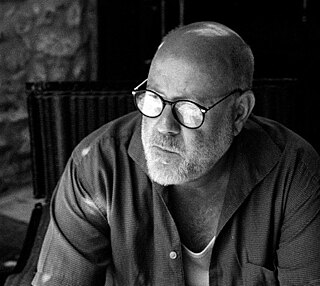
Marcus Reichert was an American painter, poet, author, photographer, and film writer/director.

Joseph Nechvatal is an American post-conceptual digital artist and art theoretician who creates computer-assisted paintings and computer animations, often using custom-created computer viruses.

Giannina Braschi is a Puerto Rican poet, novelist, dramatist, and scholar. Her notable works include Empire of Dreams (1988), Yo-Yo Boing! (1998) and United States of Banana (2011).

Barbara Ellen Rose was an American art historian, art critic, curator and college professor. Rose's criticism focused on 20th-century American art, particularly minimalism and abstract expressionism, as well as Spanish art. "ABC Art", her influential 1965 essay, defined and outlined the historical basis of minimalist art. She also wrote a widely used textbook, American Art Since 1900: A Critical History.

Johanna Drucker is an American author, book artist, visual theorist, and cultural critic. Her scholarly writing documents and critiques visual language: letterforms, typography, visual poetry, art, and lately, digital art aesthetics. She is currently the Martin and Bernard Breslauer Professor in the Department of Information Studies at the Graduate School of Education and Information Studies at UCLA.
Thomas McEvilley was an American art critic, poet, novelist, and scholar. He was a Distinguished Lecturer in Art History at Rice University and founder and former chair of the Department of Art Criticism and Writing at the School of Visual Arts in New York City.

Michael Zansky is an American artist working in installation art, sculpture, painting and photography.
Max Kozloff is an American art historian, art critic of modern art and photographer. He has been art editor at The Nation, and Executive Editor of Artforum. His essay "American Painting During the Cold War" is of particular importance to the criticism on American Abstract Expressionism.
The idea of founding a theory of painting after the model of music theory was suggested by Goethe in 1807 and gained much regard among the avant-garde artists of the 1920s, the Weimar culture period, like Paul Klee.
The following outline is provided as an overview of and topical guide to aesthetics:
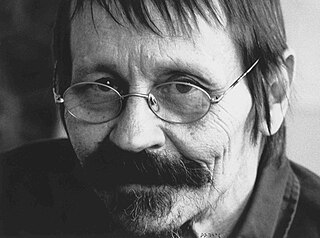
Grégoire Müller is a contemporary Swiss painter and writer, who lives in La Chaux-de-Fonds, Switzerland. His figurative paintings frequently explore current events and world news as documented on television and in print.
Roy Oxlade was an English painter, writer on art, and an art educator.
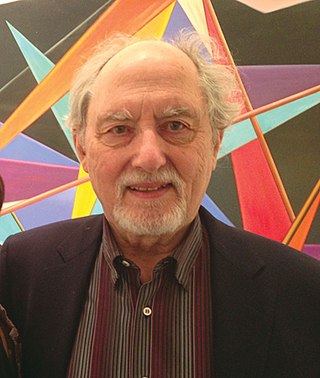
William Conger is a Chicago-based, American painter and educator, known for a dynamic, subjective style of abstraction descended from Kandinsky, which consciously employs illogical, illusionistic space and light and ambiguous forms that evoke metaphorical associations. He is a member of the "Allusive Abstractionists," an informal group of Chicago painters self-named in 1981, whose paradoxical styles countered the reductive minimalism that dominated post-1960s art. In 1982, critic Mary Mathews Gedo hailed them as "prescient prophets of the new style of abstraction" that flowered in the 1980s. In his essay for Conger's fifty-year career retrospective, Donald Kuspit called Conger art-historically daring for forging a path of subjective abstraction after minimalism had allegedly purged painting of an inner life. Despite being abstract, his work has a strong connection to Chicago's urban, lakeside geography and displays idiosyncratic variations of tendencies identified with Chicago Imagist art. A hallmark of Conger's career has been his enduring capacity for improvisation and discovery within self-prescribed stylistic limits.

Brenda Zlamany is an American artist best known for portraiture that combines Old Master technique with a postmodern conceptual approach. She gained attention beginning in the 1990s, when critics such as Artforum's Barry Schwabsky, Donald Kuspit and John Yau identified her among a small group of figurative painters reviving the neglected legacies of portraiture and classical technique by introducing confrontational subject matter, psychological insight and social critique. Her early portraits of well-known male artists, such as Chuck Close and Leon Golub, reversed conventional artist/sitter gender and power dynamics; her later projects upend the traditionally "heroic" nature of portraiture by featuring underrepresented groups and everyday people. Zlamany has exhibited internationally at institutions including the Smithsonian National Portrait Gallery, Museum of Contemporary Art Taipei, National Museum, Gdańsk, and New-York Historical Society. Her work has been recognized with a Fulbright Fellowship, Pollock-Krasner Foundation Award, and commissions from Yale University, World Bank and The New York Times Magazine; it belongs to public collections such as the Neuberger Museum of Art and Virginia Museum of Fine Arts. Zlamany is based in Brooklyn, New York.
